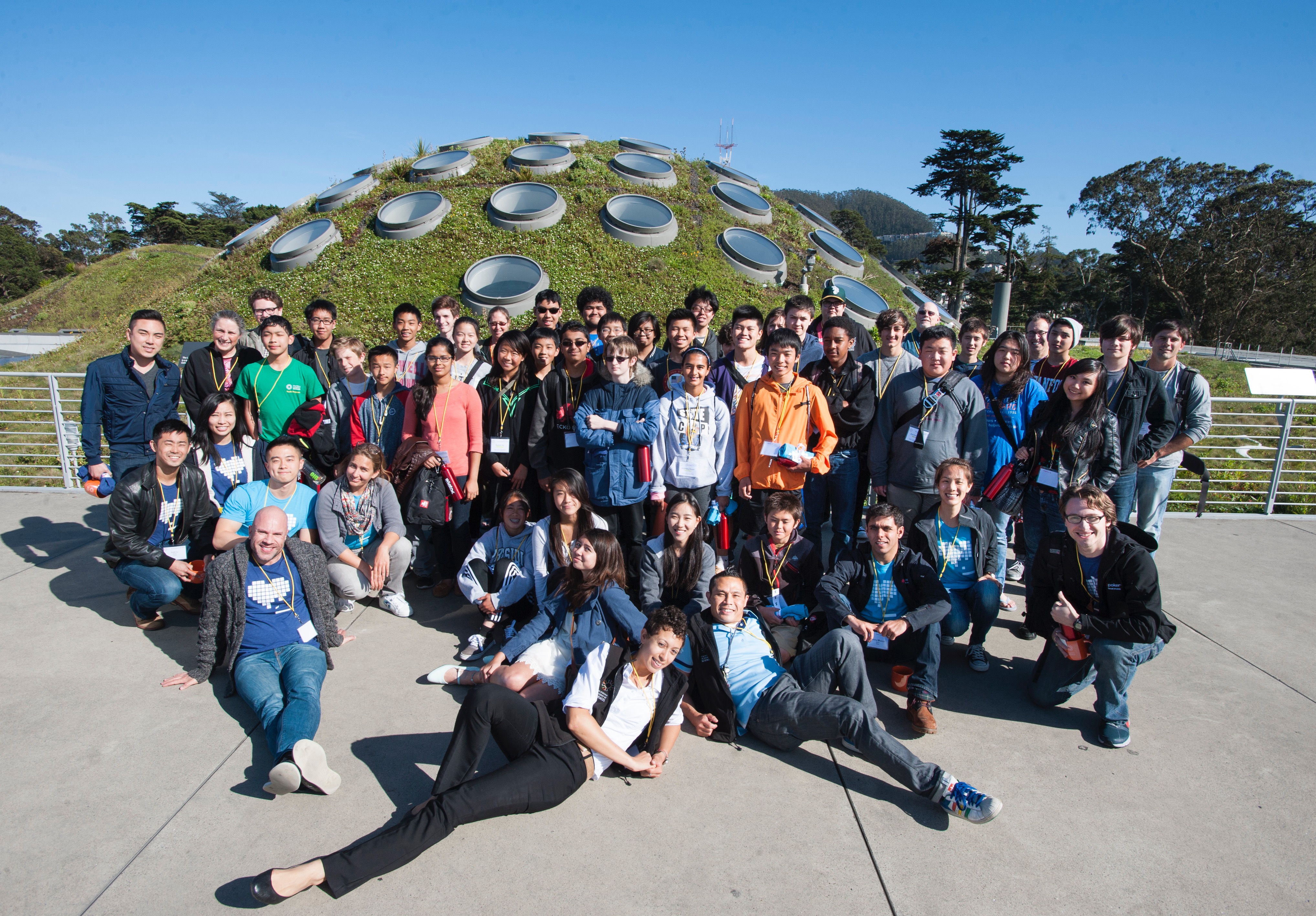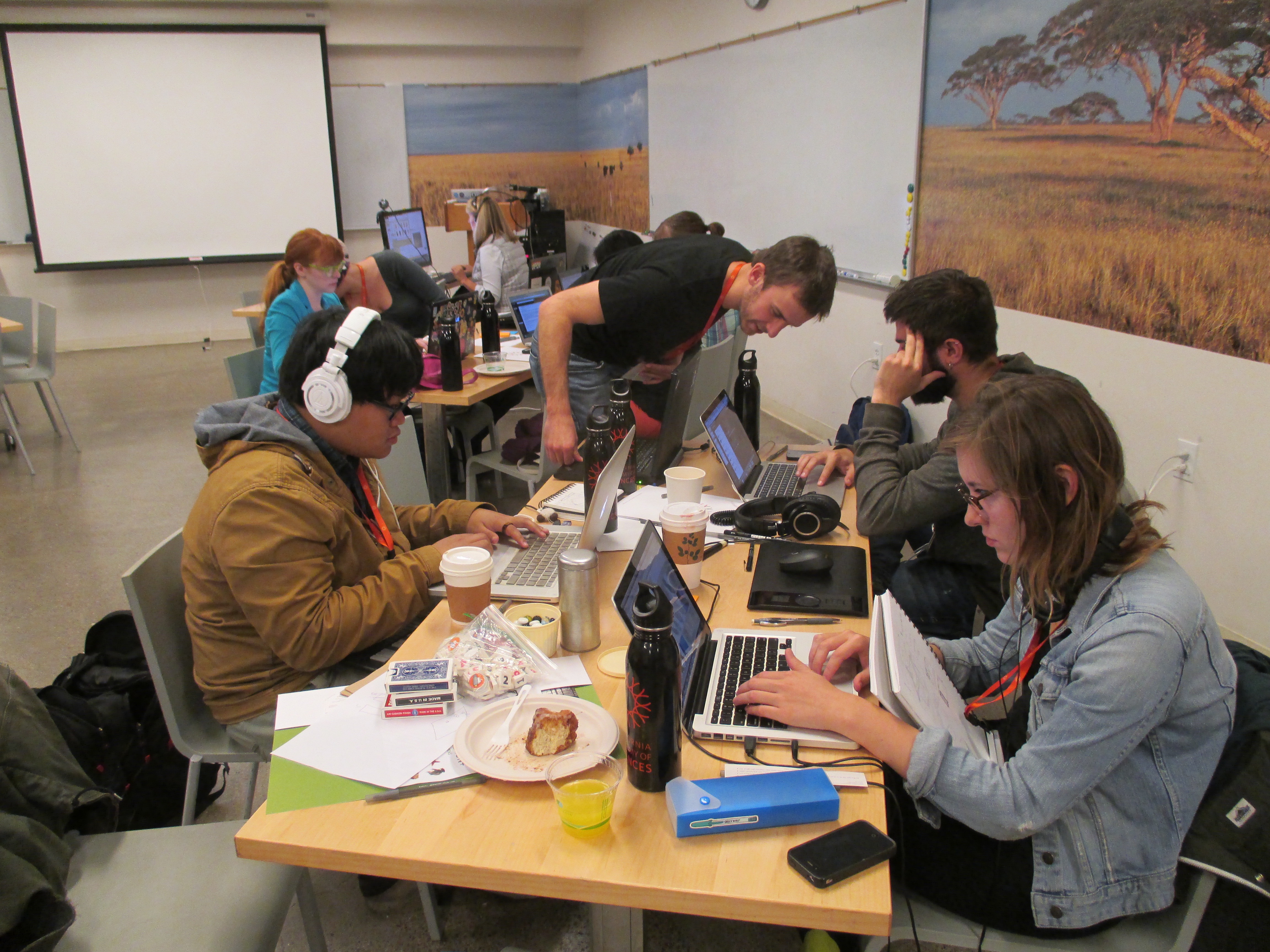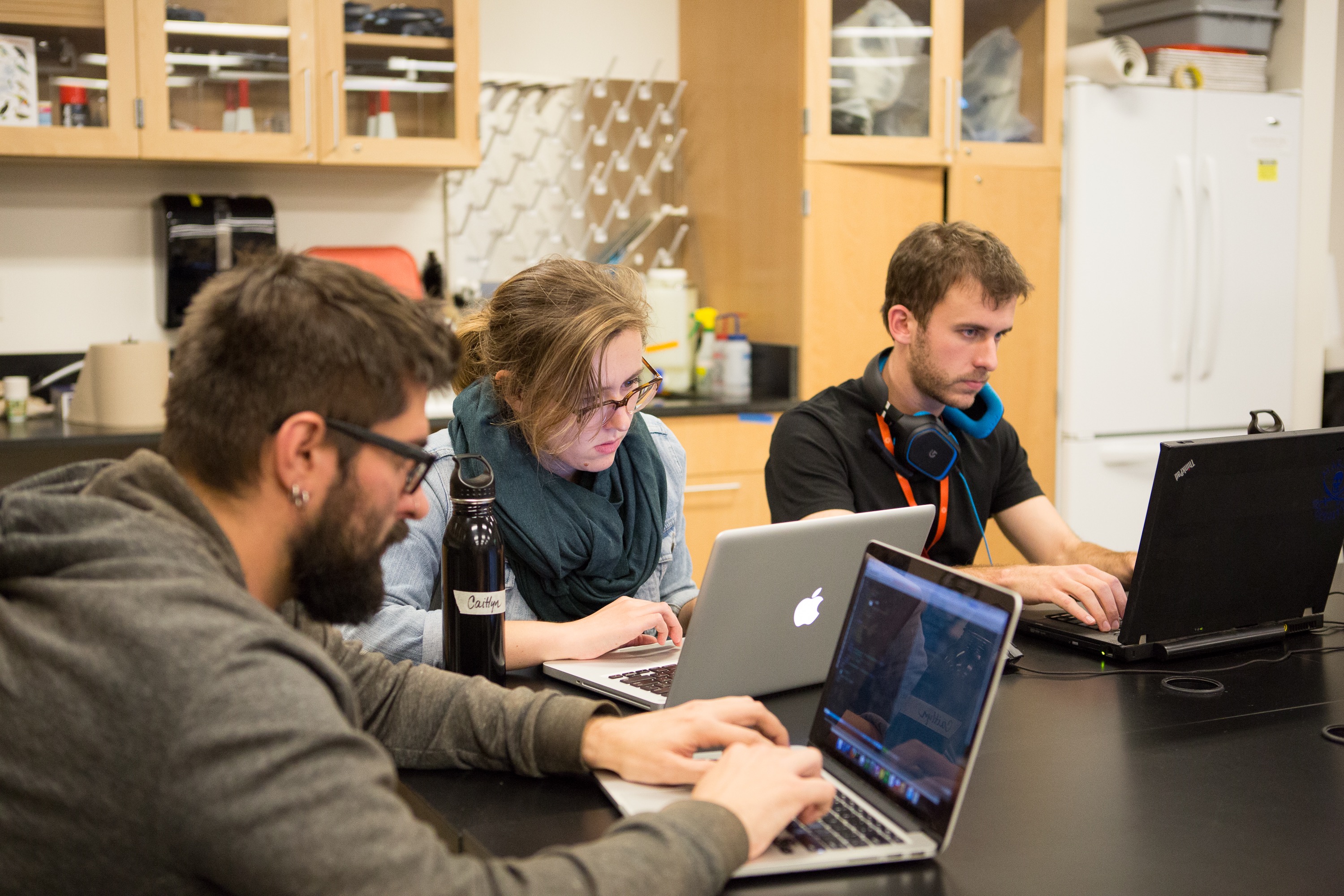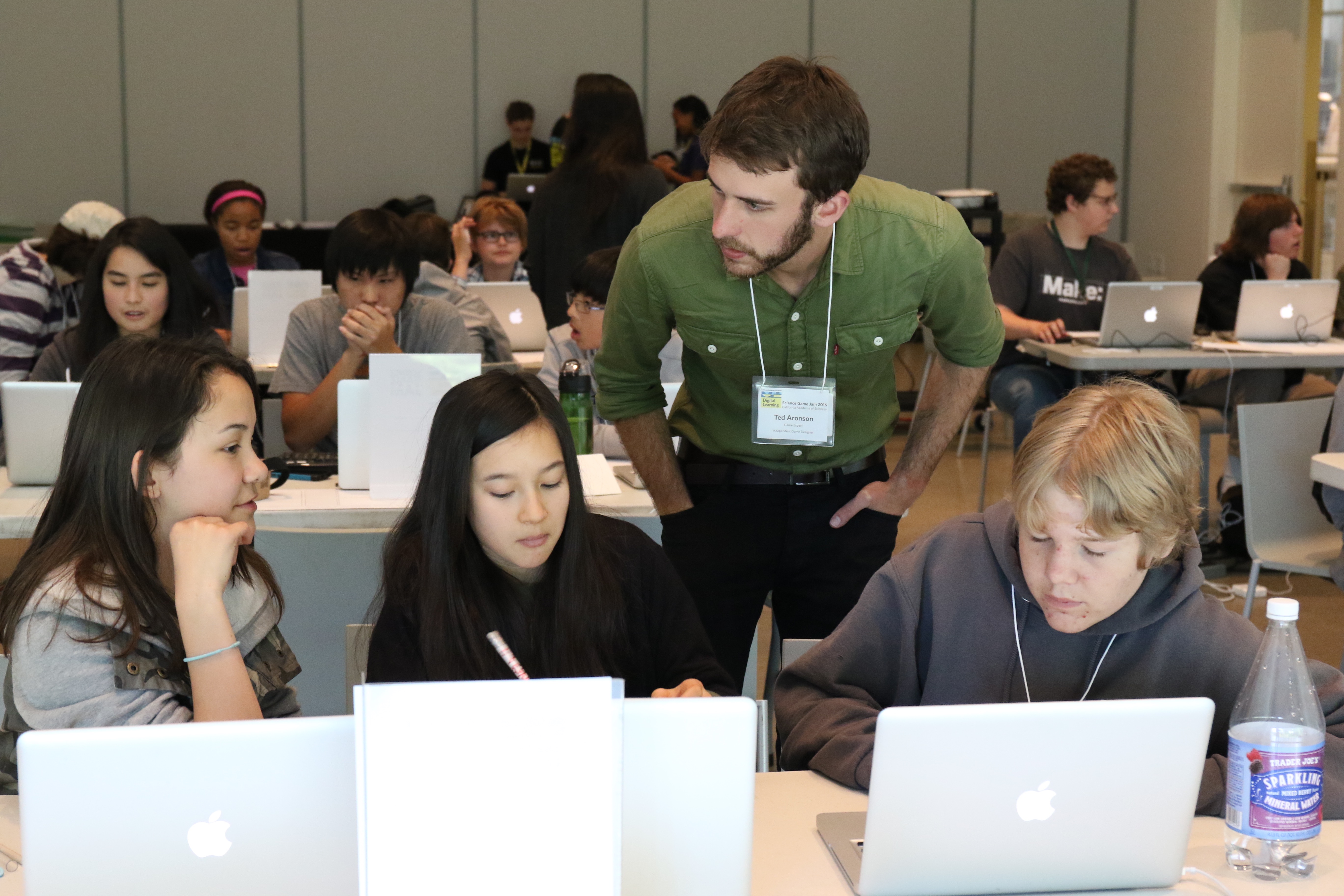On Wednesday, I am giving a talk “87 Tips on Running A Successful Serious Game Jam,” for the Digital Media and Learning conference in Irvine, California. I was being a bit facetious in my title. But upon reflection, it was not hard to come up with 87 actual tips, based on my experience organizing game jams for the past couple of years.
For those that were at my session or just interested, here is my slidedeck.
And now, without further ado… here they are… in no particular order…
Rik’s 87 Tips for Running A Serious Game Jam
- Pizza: It’s the perfect jam food. Inexpensive, accommodates virtually all diets, scales well for small or large groups. Kids (and many adults) can’t get enough of it.

- Goals: Come up with main goals of the jam, why do you want to hold a jam? E.g. for a fun experience for a group, a bonding exercise, to create buzz in your institution, to generate solutions to a problem, to excite the public about your topic, to raise funds, etc.
- Website: Set up a website or section of your existing website, where people can go for information. You might also want a Facebook page, depending on your audience.
- Product: Decide on if you need a working product at the end or just a demo. This will determine many things about the scope of your jam, who you invite, and what completion looks like.
- Security: People will have some valuable stuff with them — laptops, tablets, purses, smart phones. Think about how to keep their stuff safe.
- Safe Space: Consider having a code of conduct so participants know what is expected of them and how they should conduct themselves during the event. Here are some examples: open source anti-harassment policy, a generic code of conduct .
- Public Visibility: Do you want visitors to be able to see the jam in progress? Has both good and bad aspects. On the plus side, it can generate more public buzz about your event. On the downside, it may distract participants.
- Winners: Do you want to have winners? That can promote healthy competition, but also discourage some participants.
- Diversity: Would you like the participants to reflect the diversity of your local community? Are you able to conduct targeted outreach to certain groups?

- Requirements: How hard do you want it to be to participate? Some jams require pre-made teams, specific expertise in a technical skill, or specific time commitments.
- Breaks: You will want to schedule breaks, fun alternative activities for participants like games, tours, yoga, or jogs around the park. Make them optional so people can power through if they wish.
- Partners: Find local groups and organizations that can help make your event successful, such as from educational, corporate, government, local business, arts, and youth service sectors.
- Media: Consider arranging media coverage of your event. True confession: we have not been able to generate any traditional media interest in our game jams, but YMMV.
- Recruitment: Figure out who you want to be at the jam and how to recruit them. This can be everything from word-of-mouth to viral marketing to bus-stop ads. Here’s an invitation video our TechTeens produced to invite youth participate in a Science Game Jam we ran in April, 2016.
- Duration: Figure out how long you want your jam to be – 1 full day, 24 hours, a weekend? Typically they are not longer than two days.
- Topic: Make the subject of your jam specific enough that people know what its about, but general enough that they have lots of options for the kinds of games they could create. Beluga whales is too specific, marine mammals is too broad, protecting whales and the ecosystems they live in is about right. Balancing freedom versus restrictions is an important consideration for the jam organizer.
- Budget: Come up with a working budget. It can range from zero to several thousands of dollars. Your main expenses are likely to be food and drink, staffing, and facilities.
- Meet with all stakeholders to start the planning process as soon as possible, at least 3-4 months out.
- Marketing: Come up with marketing plan. this will require a budget, a target goal, and someone to be the coordinator.
- Decide on your jam organizer team : 4-10 people is about right for a small to medium size game jam.
- Rules: Decide on the rules of the jam. Platforms, participants, tools, judging, prizes, Intellectual Property are some important categories. Here’s an example of simple rules from Global Game Jam and the Game Jolt GDC Jam.
- Stuff: Assemble assets you need for jam well ahead of time — physical, printed, digital, personnel.
- Space: Find a space to hold your jam, one that is not too large, not too small, just right. Teams will need space to gather together, but they should not be so spread apart that they can’t interact or collaborate with the other teams.

- Catering: Figure out your catering plan — this critical to success! Not just what food and drink to get, but how it is going to be provided and maintained. Remember to be sensitive about people’s dietary needs and requirements.
- Coffee: Keep it coming, keep it fresh. Unless you have youth participants, in which case you will need to decide how wise it is to provide caffeine to them or not.
- Water : It’s the staff of life, have it readily available. Tell people to bring reusable water bottles.
- Map : Make a map so people know how to get to jam and what’s nearby. Print it out and make sure everyone has a copy.
- Parking : Where will people park their vehicles (cars, bikes, hoverboards)?
- Public transportation options: Encourage people to use public transportation.
- Internet: Make sure your internet is up to snuff to handle lots of geeks hitting the network at the same time, assuming you are doing a jam that involves internet usage.
- Custodial: Make sure the custodial team is prepared to deal with whatever refuse, recyclables and compostables get created.
- Signage: Have clear signage created and posted so people know what’s up. E.g. “Register Here!”, “Restrooms this way”, “Game Jam in Progress,” and what the wifi password is.

- Safety : Safety first! People can trip on cables, overcrowding can lead people to bump into each other, lack of sleep can lead to falls.
- Restrooms : Have them nearby, available and cleaned regularly. Consider non-gendered signage.
- Kids Policy: Can you accommodate adults who have small children with them?
- Aural Space : Jams can be noisy! Remind people to bring headphones or have quiet spaces available for those that need it.
- “I’m Done!” Have a plan for teams that finish early (or think that they finished early). They can help other teams, amuse themselves quietly, go home, etc.
- “We’re not done!” Have a plan for teams that don’t finish. Allow them to continue working, call it a day, or have them present their “prototype” anyway.
- Don’t break the Flow: Jammers want to WORK. Try and keep out of their way and only interrupt if absolutely necessary.

- Time Checks: Have a visible countdown clock. Creates excitement and buzz in the room.
- Prior Work : Decide on your policy regarding use of prior code / work / projects in the current jam. Generally game jams require that the bulk or all of the assets and work used in a game be created during the game jam by the team.
- Intellectual Property : Decide on a policy regarding use of media assets that aren’t created by the jammers. If they are only creating prototypes that won’t be distributed, you can be more lenient. But if you intend to share the games more widely, you will need to ensure that the jammers have the rights to use whatever media they are incorporating into their games.
- Ownership: Decide on if jammers can take their games and continue to develop and potential sell them later.
- Arcade: create an arcade to feature the games that people can play afterwards.
- Virtual Arcade: If the games are online, create a virtual arcade where people can play games.
- Inspiring Examples: Consider having inspiring examples to get people started. But be careful about constraining their creativity if you do so. If you show a puzzle game, jammers might all decide to make puzzle games.
- Platform : think about what platform makes sense for your jam. Should it be something readily available and known to many people? Something that can be picked up in a weekend? Or something more complex but will result in a higher quality product?
- Your media assets: consider making media assets available that you would like incorporated into the game. These can be on flash drives or a common Dropbox for all.
- Prep Jammers : Consider having “homework” that jammers are required to do on their own beforehand so they know your content well coming into the jam. These can be lectures, videos, documents, slideshows.
- Alcohol : some jams allow or provide alcohol, others don’t. Have a policy and stick to it.
- Prizes: It’s always good to have prizes for winners, and swag for everyone. It doesn’t have to be a lot. They should be coming because they are interested in the topic or supporting your cause, not because of a huge cash prize.
- Technology tools: are you providing computers or other tech for jammers? Or are they expected to bring their own?
- Evaluation: have a process for jammers to be able to give you feedback on the jam, a form, suggestion box, email address, etc.
- Call to Action: should all the games inspire some kind of action in the player?
- Audience: Decide on who is the audience for the games jammers are creating. The more specific the better. E.g. middle school teachers to use in an environmental science unit for 5-10 minutes.
- Team Size: Decide on a team size requirement. Two is too small, 10 is too many.

- On the Spot Teams: decide on if you will support people creating teams on the spot, or if they have to have pre-set teams beforehand. Our experience is that pre-set teams are always easier to manage and work together the best. On the spot teams require more support and have more potential pitfalls. But they also allow people to join last minute.
- Duration of Games: Decide on how long of game play you want. It could be anywhere from one minute to several hours. Generally during a jam, you want them to make the simplest games possible, since time to develop is so constrained.
- Location of Games : Decide on where the games will be played. E.g. in a physical location, on a website, an app, in a classroom.
- Packets for Jammers : have a packet of materials that jammers get when they arrive.
- Take care of yourself : make sure that you and your team take breaks, drink water, get sleep.
- Print out a detailed schedule for all team and volunteers to have on them.
- Be reachable: provide your cell phone number, or have walkie-talkies available for your core staff.
- Supplies on the table: Put out pens, pencils, scrap paper, art supplies.
- Electricity: Have outlets and power strips available.
- Lighting : Proper lighting can help keep the mood energetic , or calm , depending on what you want. Natural light is best, if you can provide it.
- Check-ins : figure out how to handle check-in and check-out of jammers and volunteers. Check-ins are important to make sure that teams are on track and making progress, to deal with possible issues with the direction of a game, and handle any inter-team dynamics that might need addressing.
- Name Badges: print clear name badges for all jammers. For multi-day jams, use lanyards instead of stickers, since they will need them to last over changes of clothing. We recommend that you have youth participants leave their lanyards at the close of the day, so they don’t forget them when they return for day two.
- Your Team Visibility: Have ways for your team to be easily visible using matching colors, tee-shirts, vests, badges, etc.
- Sleep: is this required for jammers? I say yes, others disagree and would rather it be an all-nighter cram session that finishes in the morning.
- Recruit and prepare your experts and volunteers. This can be beforehand over a webinar or just prior to your jam that morning.
- Plan for how to document your event : photos, video. Delegate that to a staffer or volunteer.
- Logistics before event: Do as much as possible the night before so you arrive in the morning prepped and ready to roll.
- Let the Jam Begin! Organize a high energy kick-off event including dignitaries, inspiring speakers, clear directions, an ice-breaker game, etc.
- Expert Check-ins: Schedule check-ins with teams and experts so the jammers know when they are going to be meeting with someone.
- Prototyping: Have teams create working prototypes and test them with others. This can be with other jammers, visitors, a group of youth, or whoever you can get.

- Judging : Create a rubric for judges panel to use to decide on winners.
- Hold a final presentation of games by all the teams. Make sure everyone gets their chance to shine and be applauded.
- Prizes: Award prizes and swag to the jammers. They don’t have to be fancy, but should be attractive and fun. Kids love hoodies, movie tickets, stuffed animals, gadgets, and junk food.
- Have a clean-up plan.
- Plan a celebration for your planning team, either that night or very soon afterwards.
- Post the results , share it out on your website, via email blast, on social media, or a press release.
- Thank your participants, experts, volunteers and partners appropriately.
- Financial Reporting: Prepare a final budget with actual costs.
- The Final Products: Decide on what you want your institution and your participants to walk away from the jam with. This could be everything from a fuzzy feeling, an exciting event, a set of paper prototypes, a set of working demos or nearly finished, ready to publish games. Remember what your institution wants and what the participants might want are often not the same thing.
- Plan your next jam….
- Seriously, pizza is the best.
And there you have it. Eighty-seven somewhat random suggestions for how you can organize a successful serious game jam for your group. Did I miss any great tips? Feel free to share them here.
